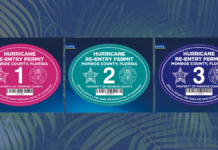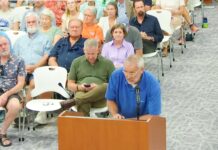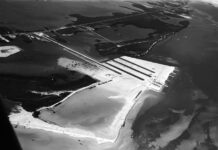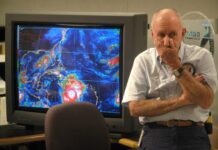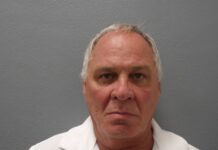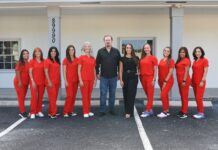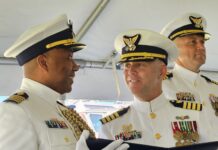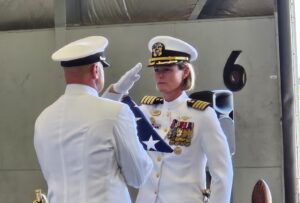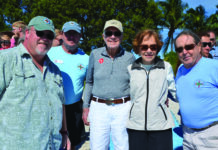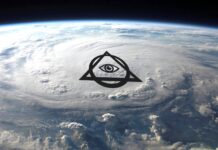Hopefully by the time you read this, two NASA astronauts — Bob Behnken and Doug Hurley — will have flown in the SpaceX Crew Dragon capsule to the International Space Station. The best part about this launch is that it takes place on American soil, the first time astronauts have lifted off from Cape Canaveral since the space shuttle’s last flight in 2011.
Although my deadline came before the launch, as I write this, all systems are go and the Crew Dragon/Falcon 9 rocket has been cleared for liftoff. This flight is called Demo 2, and it will be the validation flight for future operational crewed missions. And it will open a new chapter in American spaceflight.
Behnken and Hurley will also become members of a very elite astronaut club: the first astronauts/pilots to flight test a new spacecraft. John Young and Bob Crippen crewed the first space shuttle mission in 1981; Wally Schirra, Donn Eisele and Walter Cunningham flew Apollo 7; John Young and Gus Grissom piloted the first Gemini mission; and Alan Shepard was America’s first man in space for project Mercury.
Since the space shuttle was retired after Atlantis’ final flight in July 2011, the only way Americans (or other astronauts) could get to the International Space Station was by hitching a ride on Russian Soyuz rockets. At nearly $90 million per seat, as well as the increased tensions between Moscow and Washington, something had to be done.
Instead of NASA developing the Orion/Ares program, it financed the efforts of SpaceX and Boeing to develop a commercial crew vehicle. While Boeing has hit a few snags with its Starliner capsule, SpaceX has done amazing things with its Falcon rockets and Dragon capsules. The company pioneered relatively low-cost reusable boosters, and no one can deny that it’s amazing to see Falcon booster stages return to land at Cape Canaveral. With these reusable technologies, the cost per astronaut seat is just $55 million. Compare that to the average cost of a Space Shuttle mission at $450 million.
Boeing will get its Starliner issues resolved. NASA will continue to develop the Orion capsule and SLS launch system for the Artemis program to the moon and perhaps Mars. But in the near decade since the last Shuttle flight, only Russia and China have had the capability of launching humans into space. Several other nations have plans to join the manned spaceflight club.
But as the leaders in space technology and achievement since the 1960s, the United States had fallen way behind. NASA developed the world’s most powerful rocket, the Saturn V, and sent multiple missions to the moon between 1969 and 1972. It did this with mostly primitive computers and slide rules. Even though the shuttle was expensive, it made the International Space Station and the Hubble telescope possible, as well as lifting heavy payloads to low Earth orbit. And let’s not forget all the technological advances we take for granted that came directly from the space program. It seemed for a while that we lost our direction and sense of purpose when it came to space flight. It’s important as a symbol of national pride and international leadership that we once again will be sending humans into space from American soil.
Now that the day has (hopefully) come to pass, it would be good to see a new sense of direction with achievable goals for America’s space program. As a kid growing up near Cape Canaveral back in the 1960s, I was lucky enough to be at Ground Zero for our history-making voyages into space. I saw (and heard and felt) Saturn V rockets lift off the launch pad and slowly climb toward the heavens. My father was a launch team leader in the Apollo/Saturn program, and was among over 400,000 people who contributed to our successes in space. Whatever direction we take, whatever goals we set, I’m just happy to be able to say … it’s good to be back.
*****
Mike Forster & Co. will be back at Brutus Seafood to distribute free hot lunches and boxes of produce this Saturday, May 30, starting at 11 a.m. I will perform live this Thursday, May 28, at Sparky’s Landing in Marathon, at 6:30 p.m. And I will be playing my Social Distancing Concert 10 on Facebook Live, this Friday, May 29, at 7:30 p.m. from my Facebook page: www.facebook.com/john.bartus.
– Catch John Fridays at his Social Distancing Concerts on Facebook Live. Music available on CDBaby.com and iTunes, and wherever you get your streaming music. www.facebook.com/john.bartus

